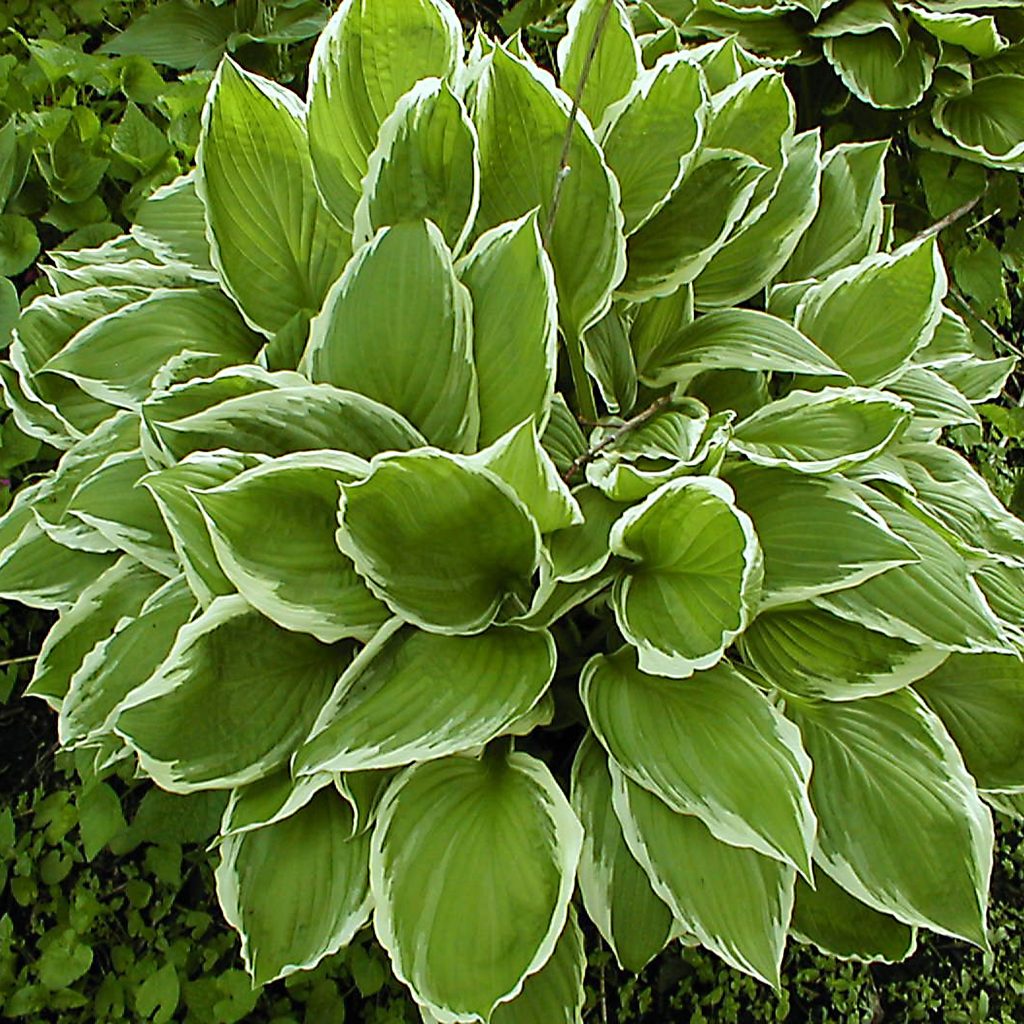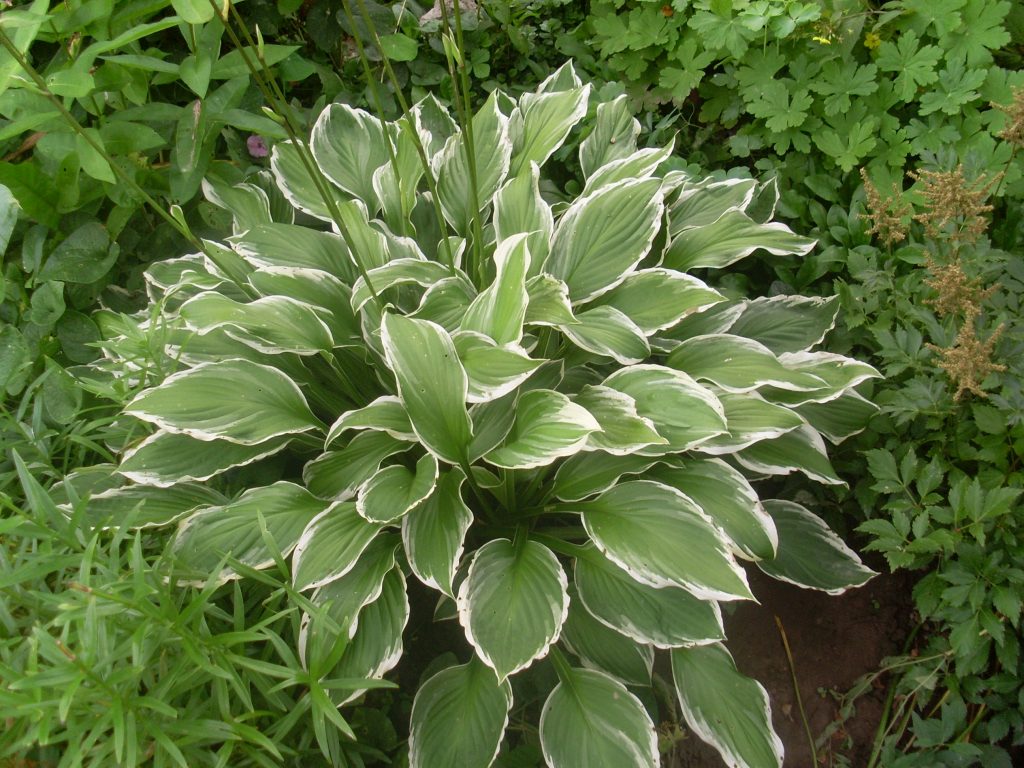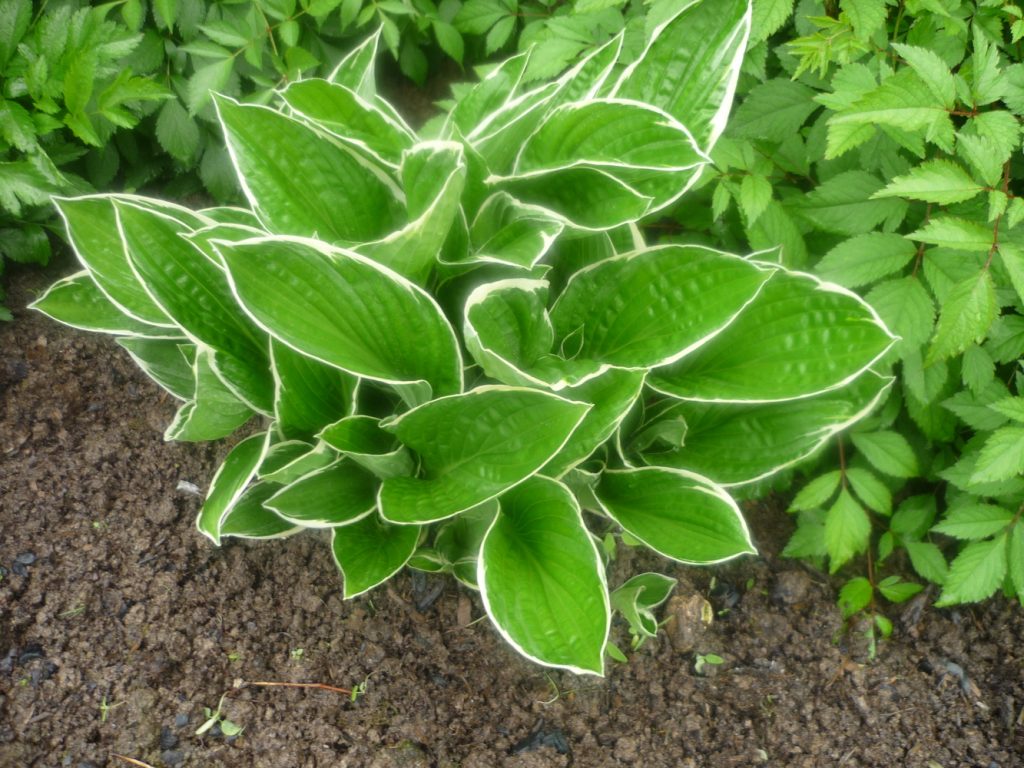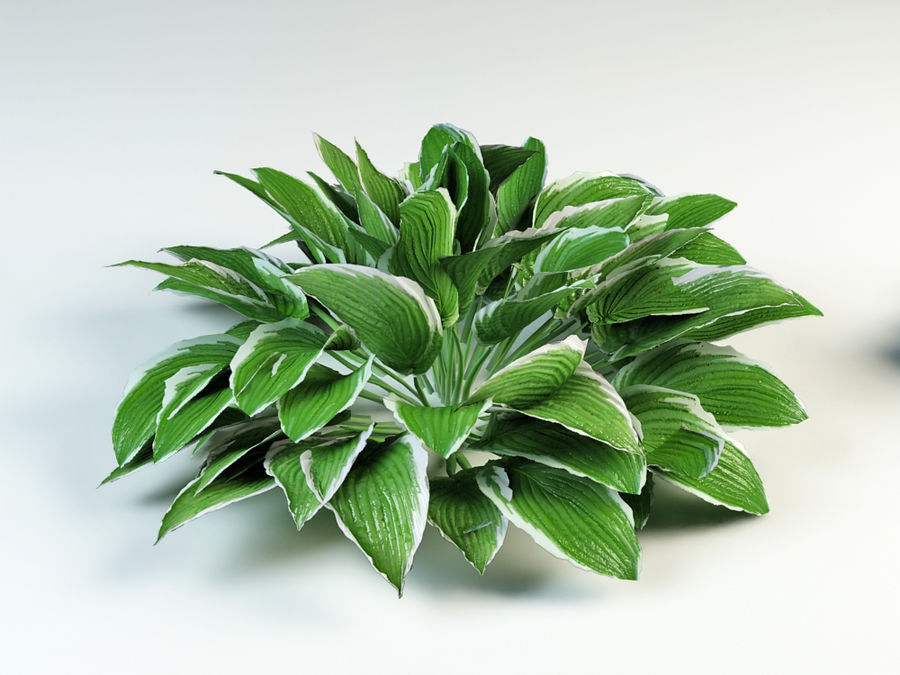Hosta Albomarginate - how to grow properly
Bred by the Japanese breeder of the host, Albomarginate is one of the most decorative perennials with variegated foliage and good winter hardiness. Thanks to these qualities, the plant has become widespread throughout the world, incl. and in our country. Consider its detailed description, planting and care rules.

Host albumarginate description
Characteristic
The scientific name of the variety is hosta Albomarginata. The description includes:
- hemispherical bush, dense, up to 60 cm high;
- it is characterized by intensive growth - it grows up to 6-8 cm per year;
- leaves develop at the very roots, are located on petioles, rounded or heart-shaped with a pointed tip, emerald color with white or milky edging;
- flowers thin out a pleasant aroma, are bell-shaped, purple in color;
- buds bloom on long peduncles - 70-80 cm, collected in inflorescences-shields of 15-20 pcs.
This plant blooms in July and remains decorative until mid or late August.
Landing features
The success of the cultivation of Albomarginate hosts depends on the correctly selected soil, the place and timing of planting.
You can plant purchased seedlings in the spring, when the last frosts have passed. In the southern zone, they are planted in the fall, but before the first half of September, so that the plants have time to take root and prepare for winter.
Place and soil
The place is sunny with shading at lunchtime, otherwise the foliage will quickly burn and turn yellow. Choose a windless area where there is no waterlogging.
Hosta prefers to grow on slightly acidic, loose, organic-enriched soil. Before planting, remove all garden debris, weeds, add compost or humus at the rate of 10 kg / m², dig deeply and level.
Landing technique
Pits are harvested two weeks before disembarkation. Their approximate parameters are 50x60 cm, the main thing is that they are larger in terms of the size of the root system. Fill in half with a mixture of peat, humus and sand mixed in a 1: 1: 1 ratio.
The roots are lowered, straightened, sprinkled with earth so that voids do not form, trampled in the near-trunk zone, watered. To prevent the soil from drying out quickly, add 2-3 cm of mulch from peat or compost.
It is important that the root collar remains above the surface of the soil, otherwise the plant will begin to rot and die.
In group cultivation, it is necessary to observe the distance between the seedlings - at least 60 cm. So they will fully develop without creating competition for moisture, space and nutrients.
Care rules
Immediately after planting, the host needs timely and competent care, which will ensure rapid growth and high decorative effect.

Hosta albumarginate planting and care
Watering
In the first two weeks, moisten every other day so that the bushes begin to grow roots and green mass. Pour 2 liters of water under each copy.
Further moistening is required after drying the soil to a depth of 4-5 cm.
Use warm and settled water at room temperature.
After watering, surface loosening is carried out, weeds are removed as the weeds grow, and weeded between the rows. To avoid moisture evaporation, add mulch from peat or compost.
Top dressing
In the third year of development, they begin to feed. Use ready-made preparations for growing decorative deciduous plants. Organics and minerals are introduced alternately according to the following scheme:
- in early spring, before the buds begin to swell;
- at the stage of budding;
- after flowering.
In addition, in late autumn, rotted manure or compost is embedded in the soil.
In order for the plants to quickly assimilate nutrients, after fertilization, abundant watering is carried out.
Pruning
One of the main advantages of Albumarginate hosts is that there is no need for shaping. In the process of growth, the bush forms a lush, compact and symmetrical crown.
Only a sanitary haircut is required to remove dried, yellowed, rotted and diseased parts.
In addition, in the summer, faded inflorescences are cut off, which take away the strength and energy of the plant.
For a quick recovery after the procedure, the host is irrigated with a solution of Zircon or Epin. To avoid infection, a sterile and sharp instrument (scissors or pruning shears) is used for pruning.
Preparing for winter
Young bushes up to three years old need to be covered, since they are weakly resistant to frost.
The procedure is started in the fall, on the eve of the first frost: the entire above-ground part is cut off, then spud with peat or compost. Mulch protects from freezing, and in the spring will serve as good nutrition after the snow melts.
Reproduction methods
Gardeners use two methods to successfully breed this perennial crop. To achieve a positive result, you must strictly follow the instructions.

Host albumarginate landing
By dividing the bush
Such breeding can be done at any time of the year, with the exception of winter. An old bush 6-7 years old is suitable, which needs to be rejuvenated.
It is watered abundantly, after an hour it is dug in a place with a lump of earth and placed in a basin of water to wash off the rest of the soil. Remove, dry, use a garden shovel or a sharp knife to cut the rhizome into several parts. For successful survival, each delenka must have roots, at least one growth bud.
Places of cuts on the roots are irrigated with a fungicide, after drying, they are sprinkled with charcoal. They are planted according to the same principle and scheme as purchased seedlings.
Cuttings
Can be propagated by cuttings without digging a bush. They are carefully separated from the heel or part of the rhizome. The cut points are sprinkled with crushed coal. They are planted in a light and loose mixture of peat and sand (1: 1). Moisten, cover with transparent film or glass, put in a warm place with diffused light.
Until the buds begin to bloom and develop new leaves, the seedlings are periodically watered, ventilated every day to prevent the appearance of mold. After about 2-3 weeks, they will start to grow, then the shelter is removed. After a month of home growing, they are planted in a permanent place in the garden.
Diseases and pests
With good care and maintenance of the host, Albomarginate rarely gets sick, but if the basic conditions are violated, immunity decreases.

Hosta undulate albumarginate
Consider the main ailments faced by gardeners in the table.
| Type of disease | Signs | Control methods |
| HVX virus | The foliage is covered with numerous spots of yellow color, which later cover the entire surface. The leaves curl, crumble. | This disease is not subject to treatment. The bush is dug up, burned. The place of growth is spilled with a fungicide or a strong solution of potassium permanganate. |
| Phylostictosis | The leaves are covered with brown spots, over time they merge. Later, a grayish or yellowish bloom forms on their surface.At an advanced stage, the infection passes to the peduncles, and necrosis of the aerial part begins. The lesions crack, the tissues are destroyed. | Treatment is carried out in several stages - watering is reduced, all diseased areas are cut out, the crown is irrigated with pesticides - Abiga-peak, Strobi or Vectra. After 10 days, the treatment is repeated. |
| Gray rot | The leaves begin to rot at the tips, later the infection spreads to the entire bush. | The leaves begin to rot at the tips, later the infection spreads to the entire bush. The initial form of the disease is treated with Bordeaux liquid, Cuprosat, Oxychom or Topaz. At an advanced stage, the plant is dug up, disposed of. The place of growth is spilled with a fungicide or a strong solution of potassium permanganate. |
| Root collar rot | The leaves brighten, crumble over time, the plant stops growing. | There are two reasons for the development of the disease - deepening of the basal neck or planting in a wetland. The initial stage of treatment consists in digging out the bush, cutting off the decayed parts and treating it with a fungicide. After drying, the hosta is planted in a new place with sterile soil mixture. |
| Slugs | Pests love to feast on leaf juice, leave holes and a slimy gray coating on their surface. Such plants lose their decorative effect, and with severe damage they stop growing. | Sheets of plywood are laid under the bushes, sprinkled with Thunderstorm poisonous bait. In the morning, all insects are collected and burned. |
| Beetles and caterpillars | These insects feed on the tissues of young leaves, gnawing their edges, then the core. | For prevention and treatment, the crown is irrigated with Karbofos. |
| Deciduous nematodes | Hostas parasitize the foliage, leaving brown stripes and strokes on its surface. | Such a plant must be disposed of, and the place of its content is spilled with a solution of copper sulfate. |
Application in garden landscape
Hosta Albomarginata has gained great popularity in modern garden design:

Hosta wavy albomarginata
- it is used in the design of rockeries, rock gardens, rabatok, mixborders;
- planted in groups along alleys, curbs, in flower beds;
- combined with ground cover flowering plants, other hosta varieties.
Gardeners reviews
This plant has received many positive reviews:
- has good frost resistance, not demanding in cultivation and maintenance, therefore beginners love it so much;
- subject to all the rules of agricultural technology, he rarely gets sick, does not need to form a crown, which greatly facilitates care in the future;
- thanks to successful reproduction, several seedlings can be grown independently.

